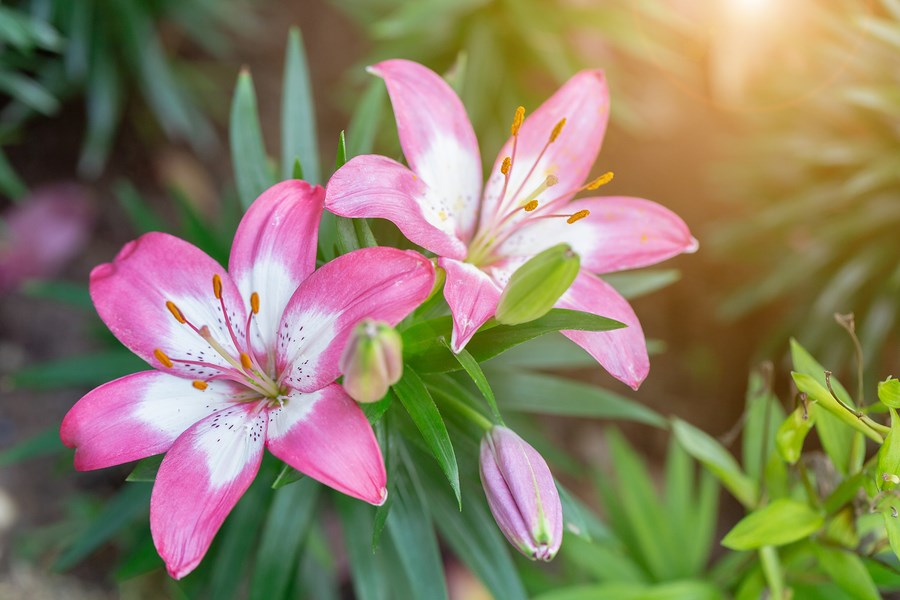There are two families of plants commonly referred to as lilies. One is the daylily, with the scientific name Hemerocallis. The second is the true lily, Lilium. Although both are called lilies, they are not related.
The daylily is a hardy perennial with long slender leaves, all originating at the crown, or base of the plant. The roots are fibrous with some thickened roots storing food and water. Originally from Asia, many cultivars offer a variety of colours and bicolours.
This well-behaved plant grows in a clump, but there is one tall orange coloured
species that spreads by roots and is considered invasive.
The daylily puts out flower stalks with many buds opening in sequence, so that even though each single flower lasts only one day, hence the name daylily, another flower has replaced it the next day.
Different cultivars bloom at different times, so that a collection of daylilies can offer blooms from early summer into fall. Some are reblooming, flowering in early summer and again in late summer. Daylily flowers can add a bit of spice to a salad, as they are edible for humans. There is some controversy whether or not they are toxic for cats.
True lilies, Lilium, grow from a scaly bulb that is perennial. Originating mostly in the northern hemisphere, many are fully hardy for us. The flowers develop at the top of the stem that has leaves growing around the stem from the base to the top where the flowers open.
There are many species and cultivars offering a variety of sizes, colours, bicolours, patterned petals, and flowers that face up, outward or down. Often I have heard them referred to as tiger lilies, possibly to distinguish them from daylilies, but most that I have seen around town are actually Asiatic lilies. True lilies are toxic for cats.
Tiger lilies have orange downward-facing flowers with black spots. They form bulbils, little dark balls, where the leaves are attached to the stem. The bulbils fall to the ground and grow into new lilies. This way the tiger lily multiplies rapidly to the point of taking over a garden bed.
Some Asiatic lilies are also orange, and may have spots or “brushstrokes”, but there are many other colours and bicolours from white to yellow, orange, pink, red and purple. They are the earliest lilies to bloom, with a long blooming season. Asiatic lilies increase by growing new bulbs at the side of the original bulb, and some also form new small bulbs in the ground at the base of the stem. In this way they form an expanding clump.
There are more varieties of lilies, to be covered in the next article.




